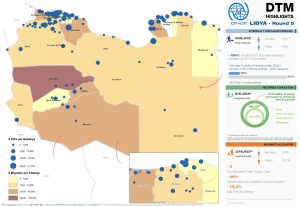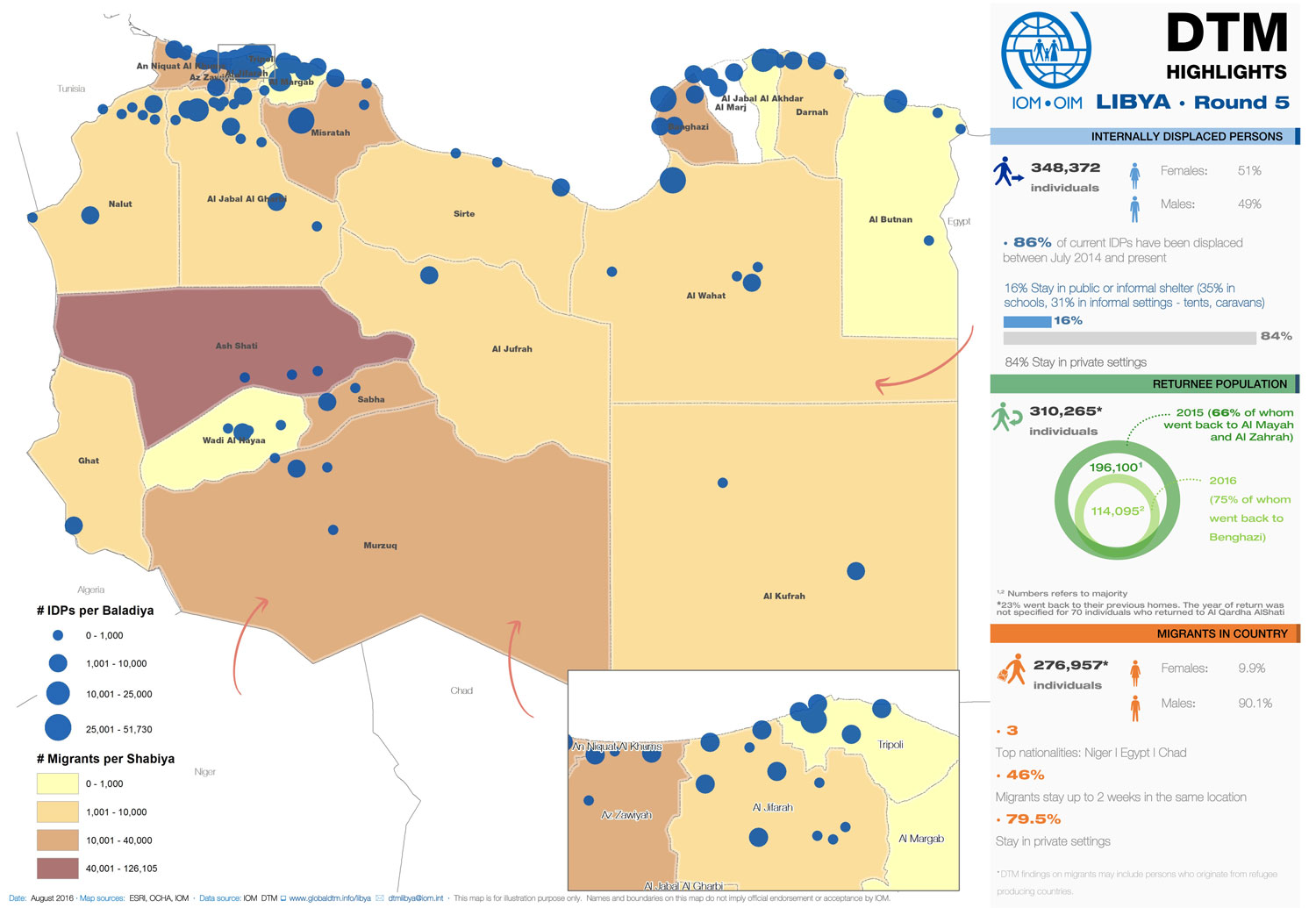By Sami Zaptia.

London, 19 August 2016:
There are 348,372 internally displaced persons (IDPs), 310,265 returnees and 275,857 migrants in Libya, the IOM’s latest report out this week says.
The report tracks mobility patterns, needs and shelter settings of populations on the move in Libya, identified by IOM’s Displacement Tracking Matrix (DTM).
The most notable changes observed since the previous report included an increase in the number of returnees to Benghazi, following the reduction of conflict in many districts, as well as growing return movements to Derna, Az Zawiyah, Gwalesh, Sabha, As Sidr and Kikla.
These findings were complemented by a decrease in the number of IDPs identified in Benghazi, Tobruk, Tripoli, Az Zawiyah and Derna, the report says.
While 84 percent of IDPs were living in private accommodation, either renting or being hosted by families, the remaining 16 percent were in public areas.
These were primarily schools, informal settings (tents, caravans or makeshift shelters) and unfinished buildings.
For the first time the report collected information on the primary needs of IDP households in each community (mahalla). Country-wide aggregated results indicated that non-food relief items (NFIs), medical services and shelter were the most frequently cited needs.
The number of migrants identified in Libya has remained relatively stable, increasing by only 5 percent since the previous report.
Some 79 percent of migrants were living in private housing, 18 percent in public places, including unfinished buildings, tents, caravans and makeshift shelters.
Approximately 2 percent were in detention centres. The most frequently reported countries of origin for migrants were Niger, Egypt and Chad.
The report data provides the geographic locations of IDPs, returnees and migrants, as well as details on shelter types, demographics, length of stay, and other details, at both the area (baladiya) level and the community (mahalla) level.








